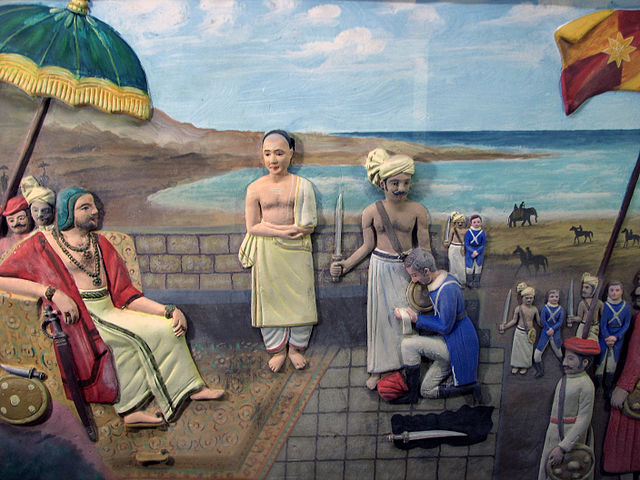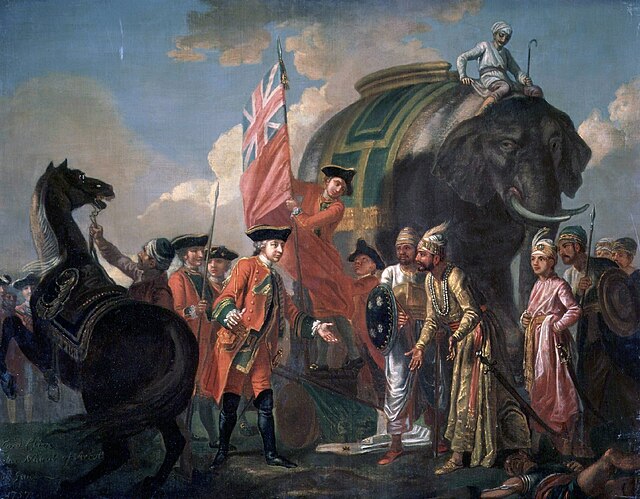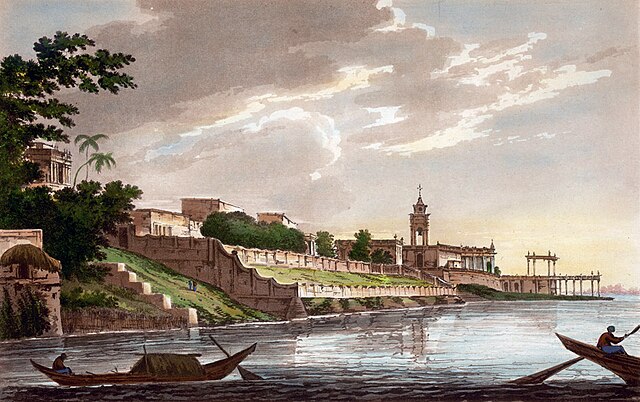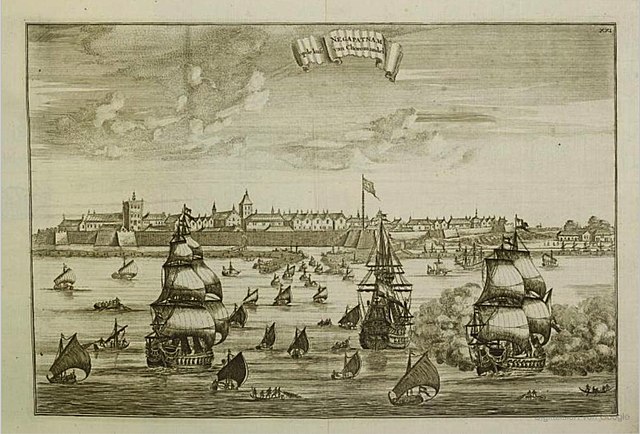Colonial India was the part of the Indian subcontinent that was occupied by European colonial powers during the Age of Discovery. European power was exerted both by conquest and trade, especially in spices.
The search for the wealth and prosperity of India led to the colonisation of the Americas after Christopher Columbus went to the Americas in 1492. Only a few years later, near the end of the 15th century, Portuguese sailor Vasco da Gama became the first European to re-establish direct trade links with India by being the first to arrive by circumnavigating Africa. Having arrived in Calicut, which by then was one of the major trading ports of the eastern world, he obtained permission to trade in the city from the Saamoothiri Rajah. The next to arrive were the Dutch, with their main base in Ceylon. Their expansion into India was halted after their defeat in the Battle of Colachel to the Kingdom of Travancore, during the Travancore–Dutch War.

Ruins of the Portuguese built St Thomas Fort at Tangasseri in Kollam city, est. in 1518
Eustachius De Lannoy of the Dutch East India Company surrenders to Maharaja Marthanda Varma of the Kingdom of Travancore after the Battle of Colachel (Depiction at Padmanabhapuram Palace).
Fort St. George was founded at Madras in 1639
Lord Clive meeting with Mir Jafar after the Battle of Plassey by Francis Hayman, depicting Robert Clive meeting with Mir Jafar after the battle of Plassey. The victory at Plassey marked the start of a period form Company expansion which saw them seizing control over the Indian subcontinent and Burma over the next century.
Dutch India consisted of the settlements and trading posts of the Dutch East India Company on the Indian subcontinent. It is only used as a geographical definition, as there was never a political authority ruling all Dutch India. Instead, Dutch India was divided into the governorates Dutch Ceylon and Dutch Coromandel, the commandment Dutch Malabar, and the directorates Dutch Bengal and Dutch Suratte.
A View of Chinsura the Dutch Settlement in Bengal (1787).
Gold pagoda with an image of Lord Venkateswara, a form of the Hindu god Vishnu, issued at the Dutch mint at Pulicat, c. 17th or 18th century.
Dutch trading ships in Negapatnam, Dutch Coromandel, circa 1680.
Factory in Hugli-Chuchura, Dutch Bengal. Hendrik van Schuylenburgh, 1665.








